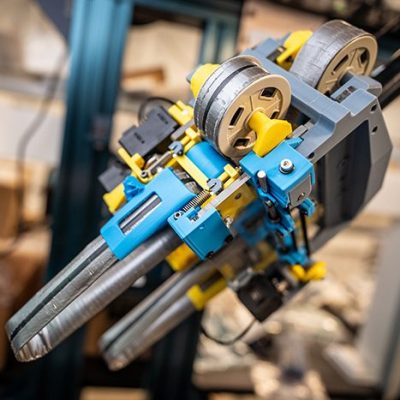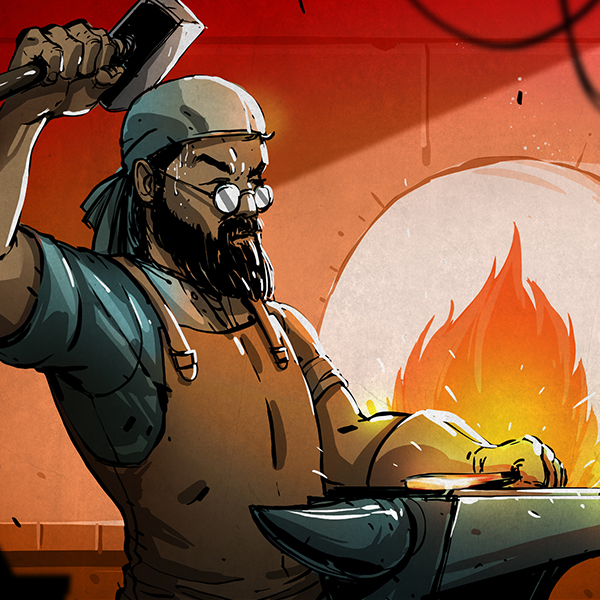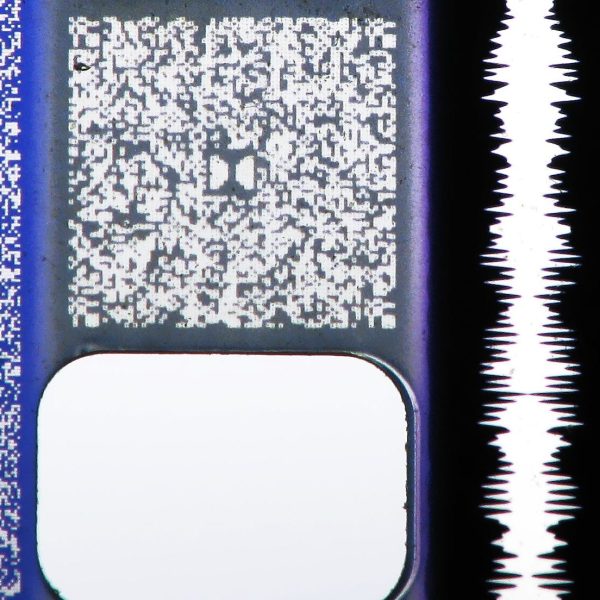How far can you stretch a measuring tape before it buckles? The answer probably depends more on the tape than the user, but it does show how sturdy the coiled spring steel rulers can be. [Gengzhi He et. al.] may have been playing that game in the lab at UC San Diego when they hit upon the idea for a new kind of low-cost robotic gripper.

With the lovely backronym “GRIP-tape” — standing for Grasping and Rolling in Plane — you get a sense for what this effector can do. Its two “fingers” are each made of loops of doubled-up measuring tape bound together with what looks suspiciously like duck tape. With four motors total, the fingers can be lengthened or shortened by spooling the tape, allowing a reaching motion, pivot closer or further apart for grasping, and move-in-place like conveyor belts, rotating the object in their grasp.
The combination means it can reach out, grab a light bulb, and screw it into a socket. Or open and decant a jar of spices. Another video shows the gripper reaching out to pick a lemon, and gently twist it off the tree. It’s quite a performance for a device with such modest components.
At the moment, the gripper is controlled via remote; the researchers plan on adding sensors and AI autonomous control. Read all the details in the preprint, or check below the fold to watch the robot in action.
This is hardly the first time we’ve highlighted a grabby robot. We’ve seen belts, we’ve seen origami — but this is the first time we’ve seen a measuring tape. Have you seen a cool robot? Toss us a tip. We’d love to hear from you.
Tip of the hat to reader [anonymouse] for pointing this one out.
















Yes, but a 3 year old can’t work non-stop for hours. Robots don’t need to be even half as agile as humans to be valuable. They just need to be able to do the same thing without needing a lunch break or sleep.
No. You got to wait he is at least 7
There there.
3.5 billion years of evolution, and a 3 year old can do what it took robotics 8 decades to develop.
+1
I doubt humans are 3.5 billion years old. The oldest civilizations like ancienct India, China or Japan are 7500 years old max.
And humans can be mass-produced by unskilled labor. Robots are more difficult to make (and less fun, some would say).
It’s debatable which are less expensive, though.
IMHO this is clever, and I can see a LOT of uses for the bulb-light-changing kind of deal. Not just light bulbs, one use is demonstrated already – opening a screw-on lid and pouring the contents, then returning both to their original position. Elderly actually NEED those kinds of helping hands at the average house that’s built with mostly zero help for the limited coordination/mobility situations (say, arthritis or Alzheimer – yep, ALL of us sooner or later will face that rather head-on).
In my other HO, RE: fruit picking – average $15 fruit picker basket does the same job better, and some fruit pickers come with a serrated stem-cutting edge built in. If I’d be designing a field-ready (or vertical farm ready) unit to do the harvesting, I’d look into multi-armed fruit pickers aided with individual cameras (and homing logic units – say, average $20 ESP32-CAM can do that wireless) mounted on each arm. The way I see it, each arm only needs rotation (to break the steam with the serrated edge), so realistically, only one step motor per arm, though, it will have to be good grade one.
Something like that. Dispense once read and ignored.
I don’t know if it’s still done, but back in the 60’s when satellites used longer wavelengths for radiocomm. it was common to make antennas out of “tape measure” type material. Launched colled up and small, they would roll out to extend when in orbit. When extended they would form a full tube instead of just an arc cross section. Early versions had problems with bending from uneven solar heating. This was solved by many holes all over the tape, letting sunlight heat the “dark side” of the tape from the inside. Brilliant!